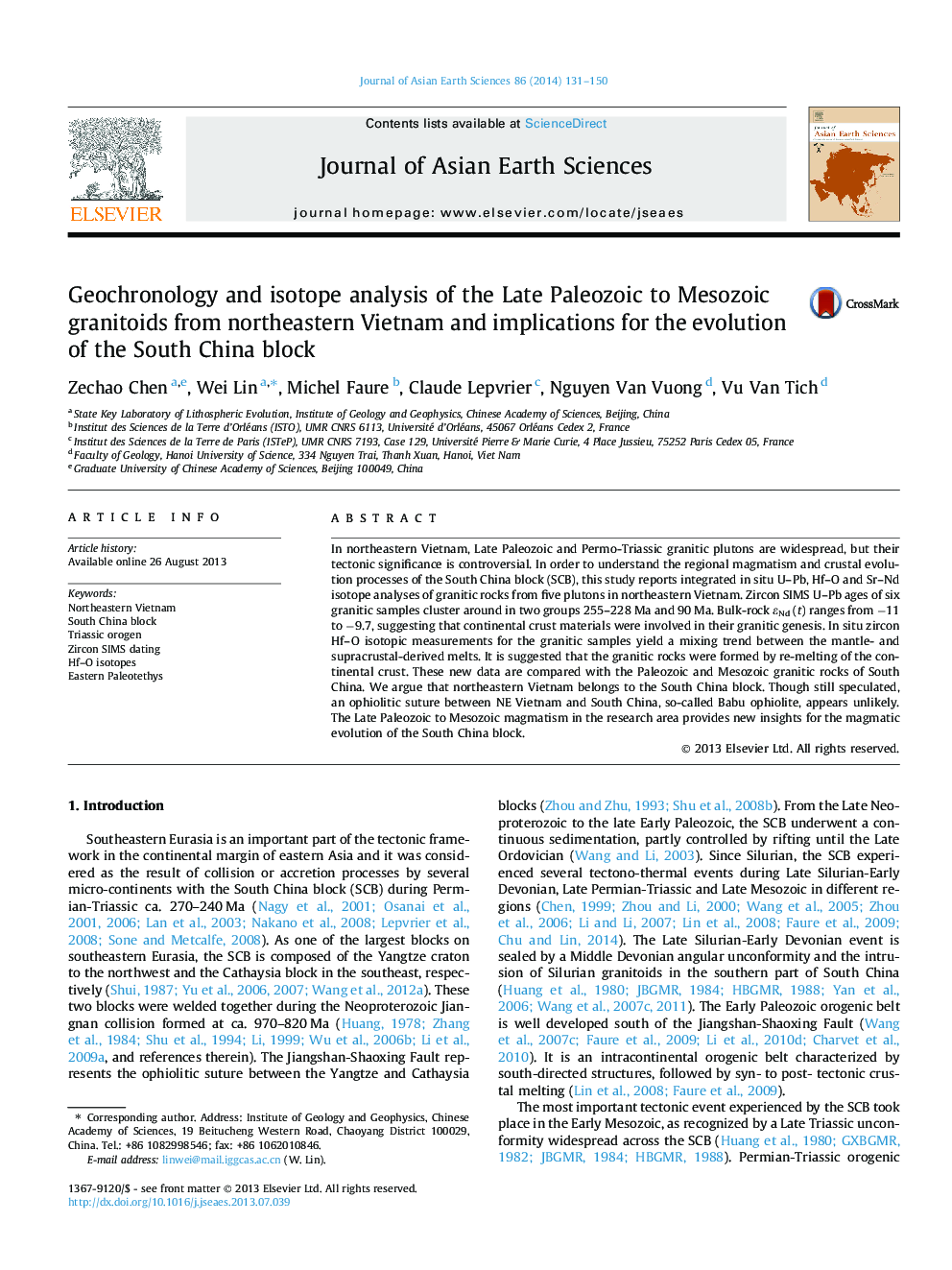| Article ID | Journal | Published Year | Pages | File Type |
|---|---|---|---|---|
| 4730695 | Journal of Asian Earth Sciences | 2014 | 20 Pages |
•Zircon SIMS U–Pb age of five granitic plutons in northeastern Vietnam cluster around in two groups 255–228 Ma and 90 Ma.•Geochronological and isotopic data improve the knowledge of the magmatism in NE Vietnam.•New data provide the implication for the magmatic evolutions of South China block.
In northeastern Vietnam, Late Paleozoic and Permo-Triassic granitic plutons are widespread, but their tectonic significance is controversial. In order to understand the regional magmatism and crustal evolution processes of the South China block (SCB), this study reports integrated in situ U–Pb, Hf–O and Sr–Nd isotope analyses of granitic rocks from five plutons in northeastern Vietnam. Zircon SIMS U–Pb ages of six granitic samples cluster around in two groups 255–228 Ma and 90 Ma. Bulk-rock εNd (t) ranges from −11 to −9.7, suggesting that continental crust materials were involved in their granitic genesis. In situ zircon Hf–O isotopic measurements for the granitic samples yield a mixing trend between the mantle- and supracrustal-derived melts. It is suggested that the granitic rocks were formed by re-melting of the continental crust. These new data are compared with the Paleozoic and Mesozoic granitic rocks of South China. We argue that northeastern Vietnam belongs to the South China block. Though still speculated, an ophiolitic suture between NE Vietnam and South China, so-called Babu ophiolite, appears unlikely. The Late Paleozoic to Mesozoic magmatism in the research area provides new insights for the magmatic evolution of the South China block.
